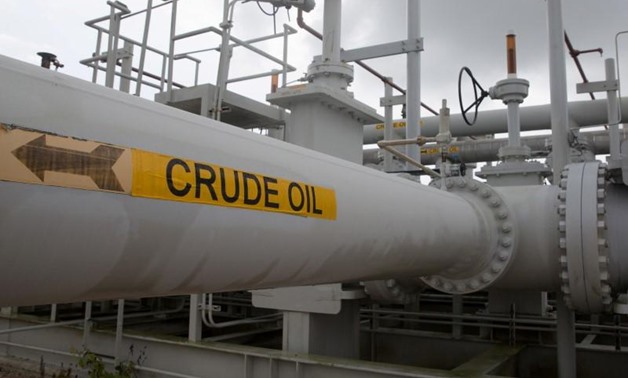
A maze of crude oil pipes and valves is pictured during a tour by the Department of Energy at the Strategic Petroleum Reserve in Freeport, Texas, U.S. June 9, 2016. REUTERS/Richard Carson
HOUSTON - 17 October 2018: Even as crude prices hover near four-year highs, U.S. oilfield service firms’ third-quarter results due out in coming days will reflect a shaky recovery, as their customers face drilling constraints and pressure to hold down spending.
Oil producers are holding off finishing new wells, and cost pressures from tight labor markets and U.S. tariffs on imported steel are driving up service firms’ costs.
Meanwhile, shale producers including Devon Energy Corp (DVN.N) and Oasis Petroleum Inc (OAS.N) are doing more work traditionally handled by service companies.
The west Texas drillers that drove the shale revolution have overwhelmed the region’s infrastructure with oil production -driving up costs, depressing regional oil prices and slowing the pace of production growth.
“The risk for a number of (oilfield service) firms is to the downside,” said Brad Handler, a Jefferies equity analyst in New York who follows the oilfield service sector.
Wall Street is trimming earnings forecasts for oilfield market leaders’ Schlumberger NV (SLB.N) and Halliburton Co (HAL.N), and for pressure pumper Keane Group Inc (FRAC.N) and sand provider U.S. Silica Holdings Inc (SLCA.N). Schlumberger kicks off third-quarter reporting by the sector on Friday.
The cuts are coming despite third-quarter oil prices CLc1 that are up more than 40 percent from a year earlier.
Schlumberger is expected to report a profit of 47 cents a share, up from 39 cents a share, in the same quarter a year ago, according to Refinitiv I/B/E/S. Halliburton’s per share profit is expected to be 49 cents, compared with 42 cents a year ago.
Weakness in completing wells is worrisome because such services have carried the day for firms still waiting for offshore drilling to pick up.
Completing a well by fracking and tying it to pipelines represents about 60 percent of onshore well expenditures. With producers holding off completions until new pipelines start up next year, there is less demand for services.
“The market for frac spreads is very soft, below even what we started in 2018,” Bill Thomas, chief executive of EOG Resources Inc (EOG.N), told investors at a New York conference last month.
The number of active hydraulic fracturing spreads or fleets in the Permian, the largest oilfield in the United States, has fallen to 172 from 192 earlier this year, and such fleets active across the U.S. have dropped to 460 from a peak of 480, according to data provider Primary Vision.
“Lower utilization and increased completion efficiencies is creating more slack in the system, with pressure pumpers most at risk heading into year end,” Barclays said in a note this month.
Producers’ unwillingness to raise spending despite higher oil prices also is taking a toll. Analysts at Barclays estimate that more than 80 percent of producer upstream budgets soon will be tapped out if third quarter spending was similar to the second quarter’s.
Bernstein analysts estimate there could be a 15 percent further decline in fracking activity, but they expect the market to bottom early next year.
“There is still risk of further declines as we approach winter and roll into the new E&P (exploration and production) budget cycle,” Colin Davies, a senior analyst for Bernstein wrote in a note.


Comments
Leave a Comment